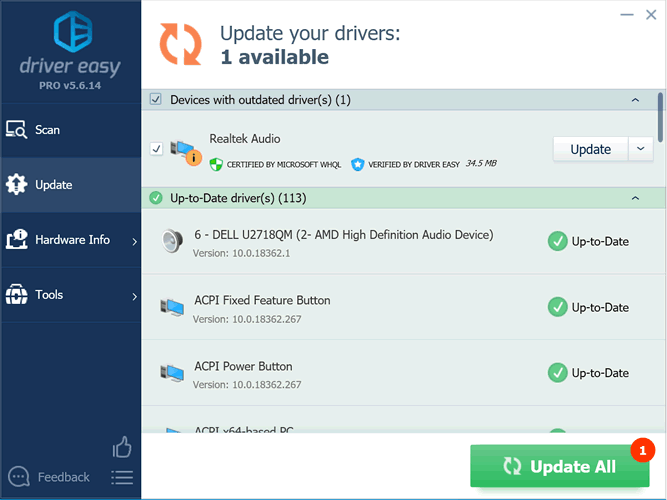Option Modems Driver Download For Windows
Most Dialout Applications use require a modem driver to be present in order to Dialout, but there are some applications that do not need a modem driver as they communicate directly with the Windows COM port. We suggest installing a modem driver for compatibility with a wide range of applications.
For example, If the Server uses a manufactures modem driver, then you should not be using the Windows 'Standard 56k modem' driver on the client, as this will result in a driver mismatch under some applications, such as Dial-Up Networking. A boot-start driver is a driver for a device that must be installed to start the Microsoft Windows operating system. Most boot-start drivers are included 'in-the-box' with Windows, and Windows automatically installs these boot-start drivers during the text-mode setup phase of Windows installation.
PLEASE NOTE:
If you install a modem driver on the Modem Sharing client, it is important that it matches the modem driver on the Modem Server computer exactly.
For example, If the Server uses a manufactures modem driver, then you should not be using the Windows 'Standard 56k modem' driver on the client, as this will result in a driver mismatch under some applications, such as Dial-Up Networking. If you are doing modem pooling then it is important that every modem within the pool uses the identical modem driver so they will always match the client end.
Some modem drivers can be installed using their own setup program, but if the setup program is looking for the modem to be physically present on the computer it may not complete, so it is reccomended that the modem driver is installed manually as shown below.
I am sorry for the confusion. We made changes to our driver downloads page about a month ago to align the direction that Microsoft is going with Windows 10. The main driver downloads page will not offer Windows 10 users with the DCH driver as a default. If you install it on a PC with a Standard driver, it will convert it to DCH. Click the link, follow the instructions, and download the driver in the ZIP or RAR file format. Extract the file when the download process is complete. Find the setup option on the menu and double click on the file. You will see a pops up notification to select the printer connection options. Select the USB option and let the setup.
Go to the Windows Control Panel (click start > control panel) and locate the 'Phone and Modems' icon. If you are running Windows XP you might need to click 'Switch to Classic View' to locate this. Double click on the icon to enter the 'Phone and Modem Options' Window. Then click on the 'Modems' tab at the top, and it will show you which modems are currently installed. Click the 'Add' button at the bottom to add a modem driver.
Enable the 'Don't detect my modems, I will select it from a list' checkbox, and then click 'Next'.
Click the 'Have Disk' button. DO NOT CLICK 'Next'.
Enter the path to your modem drivers .INF file, either by typing it and click OK, or Browse for it.

A list of one or more modem models will be displayed. If there is more then one choice, be sure to select exactly the same one being used on the Modem Server computer. Click 'Next'.
A list of available COM ports is displayed. Click the 'Selected ports' option, and click the virtual COM port which you selected in the Modem Sharing Client control panel (In this case it is COM4). Click Next.
Your modem driver should now be installed. Click 'Finish'.
You should now see the modem driver is 'Attached To' the Modem Sharing Client COM port
If no COM port is listed here, then something went wrong with the modem driver installation.
If the modem driver installed successfully, your installation is now complete.
The web site layout is protected by copyright however.
What's new
See the release notes and the readme.txt file for installation instructions, supported hardware, what's new, bug fixes, and known issues.
Overview
This download installs base drivers, Intel® PROSet for Windows* Device Manager, and Intel® PROSet Adapter Configuration Utility for Intel® Network Adapters with Windows® 10.
Which file should you download?
Note:10-GbE adapters (those that support Windows 10) are only supported by 64-bit drivers.
- PROWin32.zipfor 32-bit (x86) editions of Windows*
- PROWinx64.zipfor 64-bit (x64) editions of Windows
Modem Driver Windows 10
How to use this download
Download the self-extracting archive and run it. It will extract the files to a temporary directory, run the installation wizard, and remove the temporary files when the installation is complete. All language files are embedded in this archive. You don't need to download an extra language pack.
Supported devices
This software may also apply to Intel® Ethernet Controllers. Support for built-in network connections is provided by the system or board manufacturer.
About Intel® drivers
Option Modems Driver Download For Windows 8.1
The driver or software for your Intel® component might have been changed or replaced by the computer manufacturer. We recommend you work with your computer manufacturer before installing our driver so you don’t lose features or customizations.
Windows 7 Modem Drivers Download
See a list of manufacturers’ Support websites.
